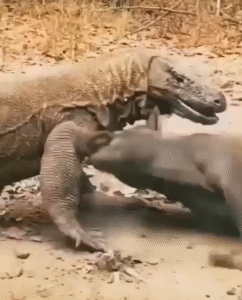
The Controversy of Releasing Pigs on Komodo Island for Komodo Dragons
Komodo Island, home to the world’s largest lizard — the Komodo dragon — has long been a symbol of wild, untamed nature. These powerful reptiles, which can grow up to 10 feet long and weigh over 150 pounds, are apex predators that have fascinated scientists and tourists alike. But a recent and controversial conservation practice — the release of live pigs as prey for the Komodo dragons — has sparked heated debate among conservationists, animal rights activists, and local communities.
The practice involves releasing live pigs into dragon-inhabited areas to provide the reptiles with food, especially when natural prey is scarce. Proponents argue that it mimics natural predation and helps sustain the dragons in areas where their traditional food sources, like deer or water buffalo, are declining due to habitat loss, poaching, and human encroachment. Supporters also claim that it enhances tourist experiences, offering a dramatic glimpse of the dragons’ hunting behavior in real-time.
However, critics of the practice raise serious ethical, ecological, and conservation concerns. One of the biggest issues is animal welfare. Releasing live pigs to be hunted and killed — often in front of tourists — has been condemned as cruel and unnecessary. The fear and suffering experienced by the pigs has led animal rights groups to label the practice as inhumane, arguing that conservation should not come at the expense of ethical treatment of other animals.
There are also ecological consequences to consider. Introducing non-native pigs, even temporarily, poses risks to the island’s fragile ecosystem. Pigs can spread diseases, compete with native species, and disturb the balance of the food web. Additionally, if not properly managed, some pigs may escape into the wild and become invasive, causing long-term damage to Komodo Island’s environment.
Furthermore, critics argue that feeding Komodo dragons in this artificial way disrupts their natural behavior. Dragons that are regularly fed may become habituated to humans, lose their hunting instincts, or even become aggressive toward people. This creates a dangerous situation not only for tourists and locals but for the dragons themselves, who could be euthanized if they pose a threat to human safety.
The controversy also highlights deeper issues within conservation tourism. There is a growing tension between maintaining natural ecosystems and providing thrilling, photo-worthy experiences for visitors. Some accuse tour operators and park authorities of prioritizing spectacle over science, using the dragons’ feeding events as a tourist attraction rather than a genuine conservation strategy.
Alternative approaches are being discussed, including habitat restoration, better protection of native prey species, and stricter regulation of human activity on the island. These long-term solutions, though slower and less dramatic, may ultimately provide a more sustainable way to support Komodo dragon populations without compromising ethical standards or ecological integrity.
In conclusion, while the intention behind releasing pigs for Komodo dragons may be to support the species’ survival, the practice raises significant concerns. Balancing conservation goals with ethics and ecological responsibility is essential — and Komodo Island may become a test case for how wildlife management should evolve in the face of complex, modern challenges.
